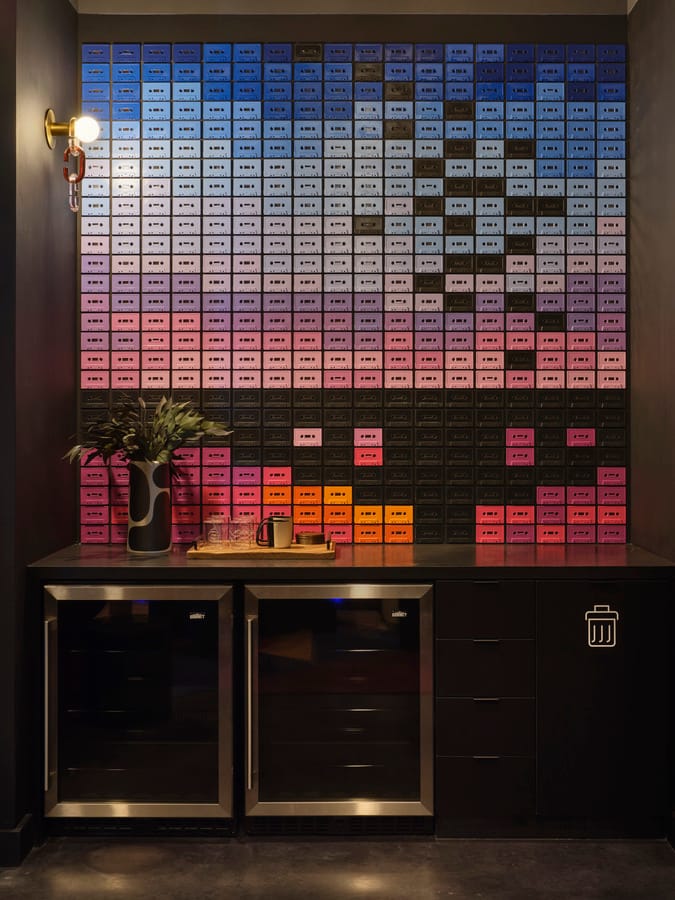By Julie Maggos, SEGD, LEED AP | Senior Director of Experiential Design
A Lite-Brite-like chess game on a break-room wall, pulsing lights leading towards reception, the shapes of a logo broken into sculptural elements suspended above a stair—these are all installations at TIAA Headquarters in Manhattan, developed by IA’s Experiential Graphic Design team to express the organization’s brand and culture.
Are these installations really considered "graphic design"? I have been in the field of experiential graphic design for over 20 years, and the truth is, we have always had a hard time determining a title for what we do. While a lot of our work involves analog and digital graphic design, it's also true that a lot of what we do does not feature "graphics" in the traditional sense of images, words or illustrations.
Angelle Bolt of IA's Austin studio recently completed a mural comprised solely of painted cassette tapes arranged on a wall. "You can't really put what we do in a box, or at least just a 'graphics' box. It's broader, and maybe more of a 'crate' than a box—with gaps where we venture out into new territory, using new elements and new technologies."
For this reason, IA is officially dropping the G—we are removing the word Graphics from the name of our service and looking to the future with the more representative title of Experiential Design. We believe this explains what we do, without understating our capabilities. It is a moniker that reflects how the industry is evolving, and IA is proud to lead with this new codification.

Photography © Andrea Calo.
The Origins of EGD
To understand the current nomenclature, it is helpful to understand the origins of our profession.
The field that we know of as experiential design today was first truly defined in the 1970s, when a group of designers formed the Society for Environmental Graphic Design (SEGD). This organization, still the preeminent trade organization and unifier of our industry, was formed to raise awareness of a field of design that embraces several disciplines (graphic, architectural, interior, landscape and industrial design) to tell stories through the built environment.
In 2013, SEGD was rebranded as the Society for Experiential Graphic Design. According to SEGD at the time: "The word “environmental” has taken on a very different context than how it was perceived prior to the sustainability movement. In addition, the scope of EGD work has expanded greatly, now encompassing ever-more-complex projects and integrating new digital technologies."
From environmental to experiential was a big shift, believe it or not. And it was the right one, because we were acknowledging the changes happening in our work and our world. The tagline descriptor of SEGD remains as resonant now as it was then: "A multidisciplinary community creating experiences that connect people to place."
The Future is Experiential
And so it is time to (slightly) rename ourselves and our occupation once again.
As experiential designers, we bring a unique expertise that goes beyond graphic design, industrial design, digital design, or architecture alone. It is the combination of these skill sets—unifying the materials, lighting, messaging, imagery, motion, time, technology and, yes, graphics within a space—that creates a multisensory experience that is truly memorable and effectual.

Photography © Garrett Rowland.
